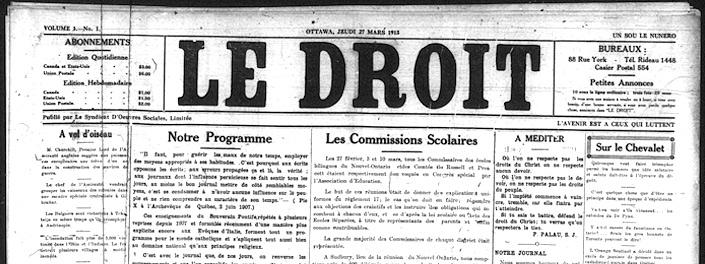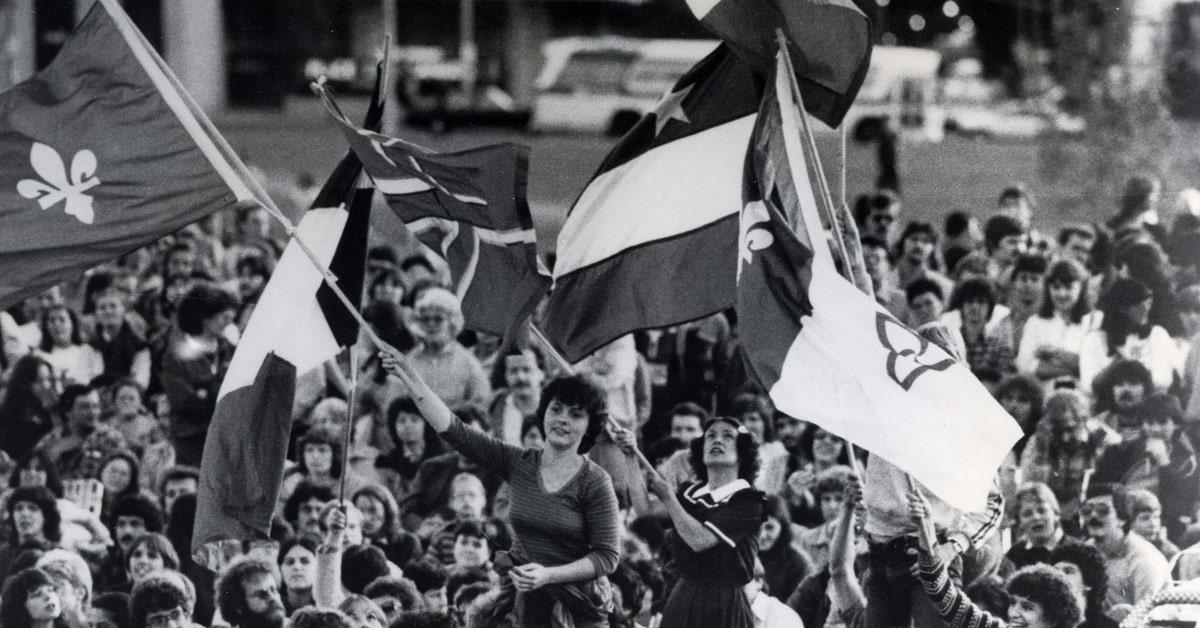






By Laura Darche
Francophones have helped shape the City of Ottawa since it was first founded as Bytown. Despite this, the story of Francophones in Ottawa is not well known. Le Centre for Research on French Canadian Culture (CRCCF) has decided to tell their story through a virtual museum entitled French Life in the Capital.
Combining documentary research and historical interpretation, this website presents original snapshots that recount the evolution, contributions and ambitions of the Francophone population of Ottawa. The site brings this history to life through a variety of archival documents reproduced in high definition, including photos, drawings, letters, notarized papers, audio footage, musical and video recordings. Teaching material is also provided. Here’s a brief look at some of the site’s resources.
Spaces in motion
Lower Town, LeBreton Flats, Sandy Hill, Vanier and Orléans are among the neighbourhoods built by Francophones. These areas are steeped in history and their inhabitants’ stories are told in their streets, both current and former. The great fire of 1900, urban renewal, the suburbanisation of the village of Orléans: all have left indelible traces on the landscape.
A vibrant community
Religious groups had been active in Ottawa for over a decade when the city was chosen as Canada’s capital. These Catholic orders had begun organizing the workers of the rough Bytown, and they greatly influenced the development of Ottawa’s Francophone community and its institutions.
Growing through culture
Language and cultural development are intrinsically linked. By moving to the new capital, Francophone politicians, public servants, journalists and other intellectuals formed a well-educated and faithful base that supported a vibrant culture despite the limited size of the population. This culture would spread its wings, influencing the rest of the province and the country.
Once traditional and patriotic, at times activist and engaged, now creative and artistic, Ottawa’s Francophone theatre productions accurately reflect their community’s challenges and struggles for recognition.
Mobilization and power
As a cultural minority, Francophones have had to defend their language rights, in terms of education in French and in the provision of public services, including health care. Demonstrations, debates and even civil disobedience have won them several battles.
The exhibition has been made possible through the support of the Virtual Museum of Canada’s Virtual Exhibits Investment Program. The Centre for Research on French Canadian Culture and the University of Ottawa have also supported the project through in-kind contributions.
The Centre for Research on French Canadian Culture specializes in archives, research and publications on the societies and cultures of North America’s historic and current and Francophone communities. It aims to promote the dissemination of knowledge and to highlight documentary resources.
